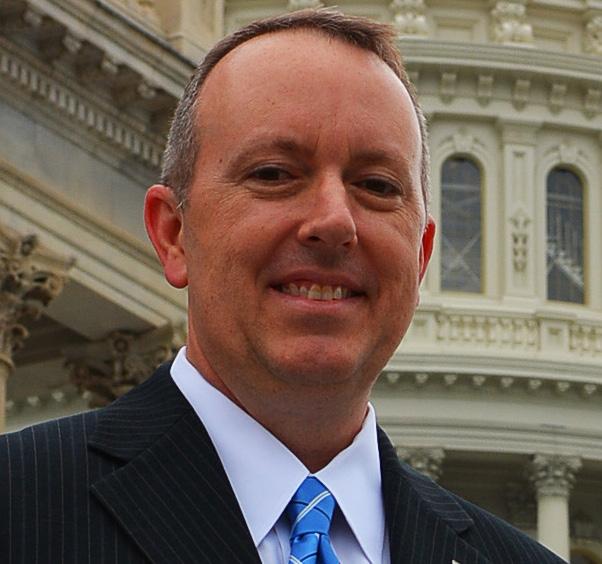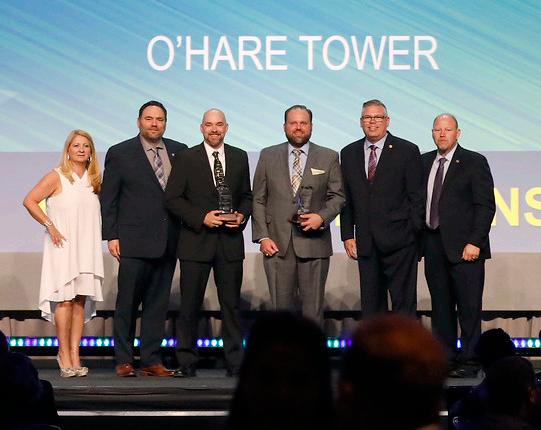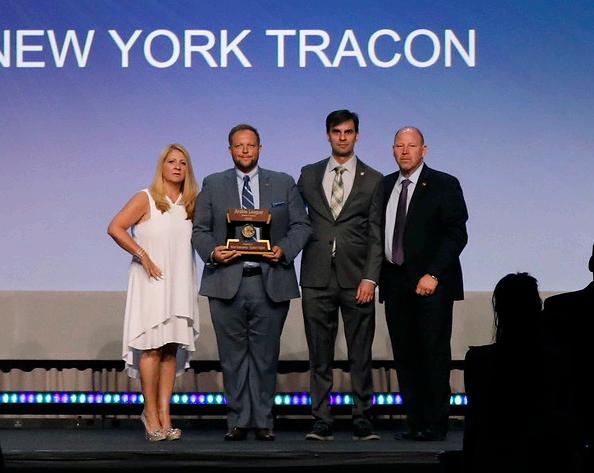
12 minute read
Focus on Safety // 2019 Archie League Award Honorees
HONORING SAFETY z by doug church, NATCA Deputy director of public affairs
Photo by NATCA
Advertisement
The 2019 Communicating for Safety Conference concluded – as it does each year – with the 15th annual Archie League Medal of Safety Awards. This is a gala event where CFS attendees come together to honor U.S. air traffic controllers who saved lives aboard aircraft needing NATCA members’ assistance.
About these awards, NATCA President Paul Rinaldi said, “We are so proud each year to honor these aviation safety professionals. This awards program is one of the most important and rewarding things we do. These award recipients remind us that our members’ work ensuring that our National Airspace System is safe and efficient is nothing short of heroic. Each of our award winners faced a unique situation in which their ability to think quickly and remain calm under pressure was tested. They represent the powerful confluence of calm professionalism, skill, and training that is a hallmark of all air traffic controllers and other aviation safety prof e s s i o n a l s who work every day to ensure safe outcomes.”

The following were the 2019 winners of the 15th Annual Archie League Medal of Safety Award:
INTERVIEW
Tom Adcock is NATCA's New Director of Safety and Technology. He previously worked as a Certified Professional Controller for 30 years.
The Controller: The Theme of CFS 2019 was Every Day Is a Training Day. What is the purpose behind this theme?
Adcock: The purpose is to raise the membership’s awareness of the importance of training in our profession. We should be looking at it as the need for continual improvement in our profession. It is a process that should not stop throughout our entire careers. From the time we start training in our first facility to the time we hang up our headsets, we should look at training as a way to ensure we are at the top of our game whenever we work traffic.
The Controller: This initiative seems to resemble the goals of the NATCA Professional Standards effort in that it promotes the importance of continually looking for ways to improve our performance as a workforce. Is that accurate?
training plays in improving our performance on a continuous basis. Training needs to be a part of our everyday routine.
The Controller: With the United States pilots (Air Line Pilots Association, Int’l) undertaking their own training initiative, called “Train For Life,” what similarities do you see between the two efforts and how important is it that controllers and pilots are sharing this mindset at the same time?
Adcock: Because we are on the frontlines of the aviation industry, we understand the importance of being on the same page as we deploy new technologies and procedures. Both professions require certification, but we understand that learning does not stop at the point of certification. It is a process that must continue throughout our entire careers.
The Controller: What is most important for NATCA members to know as we move for
Photo by NATCA

ward and raise the awareness and implementation of Every Day is a Training Day?
Adcock: We want to see the members that attend CFS 2019 take what they learn at the conference and go back to their facilities and act as leaders in fostering the culture change that ensures that we destigmatize how we view training and its importance in the continued development of Certified Professional Controllers. y
The United States Federal Aviation Administration measured the closest proximity of the two aircraft at .23 nautical miles and 100 feet.

“And that is only because these two controllers acted so quickly to pull these airplanes apart,” Rinaldi said. “Their actions on that day saved hundreds of lives.”

NATCA President’s Award Normally, the NATCA President’s Award for top controller flight assist of the year is chosen from the regional Archie League Award winners honored during the banquet. But this year, NATCA President Paul Rinaldi chose an event that was not one of the other honored saves of the evening. The award went to Ryan Schile and Andrew Rice, air traffic controllers from Chicago-O’Hare Air Traffic Control Tower (ORD), and it was one of the most dramatic events NATCA has ever recognized.
On March 1, 2019, after noon local time, Schile was working third local control and was departing aircraft off of Runway 10- Left at intersection DD. Schile was also working the arrivals that were landing on 10-Right and 10-Center. He worked them back across the runway he was departing to the terminal area.
Schile issued a departure clearance to an Envoy Air twin-jet ERJ-145, with an initial heading of 100 and a takeoff clearance. This heading paralleled the departure runways and the arrival runways so there would be no conflict. The pilot of the ERJ145 read back the correct heading and began takeoff roll.
Once airborne, for an unknown reason, the ERJ-145 began a hard-left turn, placing that aircraft in a collision course with an American Airlines Boeing 737-800, which was departing Runway 9-Right. Schile quickly recognized the potential for a collision and instructed the ERJ-145 to stop his climb immediately.
Subsequently, Schile issued an immediate turn to the right to a heading of 140.
Working on the other side of the airport was fellow ORD CPC Andrew Rice, who was working the American 737. He also observed the impending collision and issued the aircraft an immediate left-hand turn and a 070 heading. Seeing that was not enough, he instructed the aircraft to continue its left-hand turn on a 360 heading to pull these aircraft apart.
Video of the radar replay of the event, with audio | Video of Schile and Rice receiving their award
Also honored with Archie League Medal of Safety Awards were the controllers who performed these 11 saves:
Alaskan Region Gabriel Zeifman, Juneau Air Traffic Control Tower (JNU) The pilot of a 1979 Mooney M20J was on one of the last legs of a cross-country trip from his home in Hartford, Conn. He departed from Fairbanks, Alaska, and was near completion of the four-hour, eight-minute flight through unfamiliar terrain. With no moon to illuminate the terrain and clouds obscuring the landscape, Zeifman feared that the pilot, who appeared confused and disoriented, did not have the airport in sight and would be unable to orient himself to complete the visual approach. Zeifman, a pilot, worked to ensure the aircraft was reoriented and joined the final for the runway.


Read more | Watch award presentation | Watch event
Central Region Andrew Crabtree, Kansas City Air Route Traffic Control Center (ZKC) A Cessna 340 was traveling at flight level 230, deviating around thunderstorms, trying to get to Indy South Greenwood Airport (HFY), located 13 miles from Indianapolis. Crabtree came to the assistance of another controller who tried to vector the pilot around the thunderstorms. The pilot later continued to his destination and landed without incident. He called the facility to express his gratitude and said without the help of the controllers looking out for him, the outcome may have been much different. Crabtree used his experience as an aviator to spearhead a team effort to save this pilot’s life.
Read more | Watch award presentation | Watch event
Eastern Region, Brian Rabinowitz, New York Terminal Radar Approach Control (N90) On a cold and cloudy winter day, a Mooney departed White Plains Airport to conduct practice IFR approaches when the pilot experienced flight control problems. Rabinowitz noticed the pilot was not adhering to control instructions. He used his experience and his training to assess the situation and work to get thepilot down safely. Rabinowitz later found out the pilot had a total electrical failure and was just using a compass for the headings Rabinowitz was issuing him. “You don’t really feel like you do anything out of the ordinary when something like this happens,” he said.

several techniques to limit the amount of stress for her and helped her to stay engaged in her training and rely on the lessons she had learned.

Read more | Watch award presentation | Watch event

Great Lakes Region Nicholas Ferro and Charles Terry, Indianapolis Air Route Traffic Control Center (ZID) Ferro and Terry assisted a pilot flying dangerously low in high terrain with many obstacles. He was missing intended approaches due to weather, was disoriented, and was having trouble flying the aircraft due to oil sputtering all over the windshield. Ferro assisted the pilot in identifying an alternative airport for landing. He called for Terry, who is also a pilot, and asked him to plug in on the D-side. They soon traded places at Terry’s request. Ferro worked hard on the D-side, managing resources and helping Terry prioritize and manage the other aircraft in the sector. They helped get the pilot out of the clouds and avoid obstructions.
Read more | Watch award presentation | Watch event
Great Lakes Region Shane Boulds and Justin Dokken, Minneapolis Air Route Traffic Control Center (ZMP) Boulds and Dokken helped the student pilot of a Cessna 172 Skyhawk who indicated that she had hit her head in bumpy conditions, was having trouble navigating, and wanted to land at a nearby airport. Boulds described available airports. The pilot was flying solo and was not fully comfortable with her situation. The pilot decided to land at Big Rapids, Mich. (RQB) which had a strong crosswind component. Boulds used his own flight experiences to help keep the pilot focused and calm. He used

New England Region Christopher Corcoran, Providence Air Traffic Control Tower (PVD) The pilot of a single-engine Cessna 182 Skylane, flying with two passengers to New Bedford Regional Airport (EWB, located between Providence, R.I., and Cape Cod), found himself stuck above heavy cloud cover. Making matters much more serious, he was having instrument problems and was unable to navigate. He was also unable to maintain either altitude or speed. He made three unsuccessful attempts to land at EWB. Corcoran declared an emergency for the pilot and vectored him toward Providence. “I put him on a heading and almost right on final started slowly stepping him down,” Corcoran said.


Read more | Watch award presentation | Watch event
New England Region, Jeff Aulbach, Neil Cóspito, & Michael Jacobson, Boston Air Route Traffic Control Center (ZBW) The three controllers were tracking an F-16 from the Vermont Air National Guard, piloted by Lt. Col. Nate Smith. Poor weather had prevented Smith from landing at his home base in Burlington, Vt. With only 15 minutes of fuel left, Aulbach, Cóspito, and Jacobson quickly came up with a plan and were able to divert a flight of KC-135 refueling tankers for a mid-air refueling. After the F-16 refueled, they safely guided the plane to an alternative landing location in Syracuse, N.Y., preventing a disastrous outcome.
Read more | Watch award presentation | Watch event
Northwest Mountain Region Joseph Asmundson, Matthew Colby Rhea, Nicole Breann Coffey, and Devin Carlisto Near the border of Washington and Idaho, Shane Daily was piloting his two-seat, single-engine Lancair 320 when he encountered IMC conditions while flying VFR. Daily was not IFR certified. Asmundson was working a low altitude sector and declared an emergency for the aircraft. He then assisted Daily in trying to re-establish VMC conditions but Daily was stuck on top of the clouds at altitudes of up to 20,000 feet. The pilot was shaken and anxious from being caught in the clouds with a VFR rating, but landed after the team of controllers worked for over an hour to help him find his way down.

Read more | Watch award presentation | Watch event
Southern Region (Paul) Ray Keeling, Memphis Air Route Traffic Control Center (ZME) A single-engine Socata TBM 930 departed Paducah, Ky., en route to Houston. But about 50 miles south of Paducah, the pilot experienced problems in controlling the aircraft and was not responding to controllers. Through Keeling’s dedicated work, the pilot landed safely. Keeling’s composure in this situation helped save the pilot’s life. He immediately understood the effects that the pilot was encountering. With a loss of pressurization, disorientation, and an aircraft that was difficult to control, Keeling was able to step in and advise the pilot when he descended to a dangerously low altitude in close proximity to obstructions.

Read more | Watch award presentation | Watch event
Southwest Region Michael Schawinsky, Houston Terminal Radar Approach Control (TRACON) Schawinsky already had his hands full, working a Cessna 172 that was having trouble flying headings and maintaining altitude and whose airspeed seemed especially low. Then, after declaring an emergency for the pilot and working to get him on his way to Galveston (GLS), a second Cessna 172 in Schawinsky's airspace also declared an emergency. This pilot was doing practice approaches when he experienced a brief fire in the cabin and appeared to be losing altitude. Schawinsky’s expertise, calm demeanor, attention to detail, and professionalism throughout the events may have saved several lives that day.

Read more | Watch award presentation | Watch event
Western Pacific Region Michael Tamez, Southern California Terminal Radar Approach Control (SCT) In the middle of winter with icing everywhere (a rarity in the Los Angeles Basin), Tamez assisted the pilot of a Cessna Skyhawk 172 with a malfunctioning pitot tube heater. He landed safely despite significant weather and challenging conditions over high terrain. Tamez is also a pilot. He used that experience in this episode. He questioned the pilot of the possibility of experiencing icing. Tamez immediately descended the aircraft to 6,000 feet in an attempt to prevent further icing. He asked the pilot’s intentions and provided several alternate destinations. Through no gyro turns, Tamez was able to direct the aircraft towards lower terrain.

Read more | Watch award presentation | Watch event y
Photo by NATCA

z Photo: NATCA President Paul Rinaldi NATCA interviewed FAA Administrator Steve Dickson on stage during CFS 2019. Dickson was sworn in as the 18th administrator of the U.S. Federal Aviation Administration (FAA) in 2019. Dickson has said that safety is “a journey that we must embark upon with renewed vigor each and every day.”










